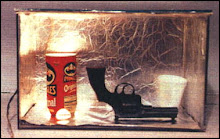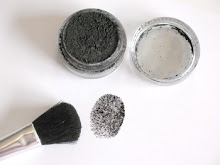What are fingerprints?
Fingerprints are unique features that everyone has. The reason why they're unique is because every person's fingerprint is different. While your body grows and your characteristics change, your fingerprints do not. That's the reason why they have been used to accurately identify criminals for over 100 years.
Important People:
Malpighi (1686): He discovered our fingers had loops, ridges, and spirals in them.
Faulds (1880): He started studying skin-furrows after noticing finger marks on prehistoric pottery. He recognized the means of identification and created a way to classify them.
Bertillion (1882): He developed a system called Anthropometry or the Bertillon System. It classified people using different parts of a person's body.
Vucetich & Galton (1892): Juan Vucetich made the first fingerprint investigation. He identified Francis Rojas as the woman who murdered her own 2 sons and tried to save herself by cutting her own throat. Unfortunately for her, a bloody print of her hand was left on a door. Sir Francis Galton wrote a book called, "Fingerprints", which talked about the uniqueness and permanence of fingerprints.
Saturday, October 24, 2009
Thursday, September 24, 2009
Types of Fingerprints
Direct: A direct fingerprint is when some kind of substance, ink or dust, for example, gets on your fingers and is imprinted on a clean surface.
Latent: Latent prints are formed when your hands and fingers perspire and form sweat and gets on a surface.Plastic: A plastic fingerprint is when you put your hands into a material, such as putty, and the material retains the shape of your print.
Thursday, September 10, 2009
Analysis of Hair/Fiber Lab
The shaft of a hair is made up of three parts. the cuticle, which is the outside, the cortex, which is the next layer in the hair, and then the medulla, which is the very center of the hair.
 We discovered that every type of hair is different. Asian male hair has a spiny cuticle, a black medulla and a dark brown cortex. Black male hair is more curvy and has a brown cortex. White male has a yellowish cortex, a black and smooth cuticle, and a light colored medulla. Dog hair has a crizzled cuticle and lines in the medulla. Then the cat has a crizzled cuticle, a rough and edgy cortex and it was hard to actually see the medulla.
We discovered that every type of hair is different. Asian male hair has a spiny cuticle, a black medulla and a dark brown cortex. Black male hair is more curvy and has a brown cortex. White male has a yellowish cortex, a black and smooth cuticle, and a light colored medulla. Dog hair has a crizzled cuticle and lines in the medulla. Then the cat has a crizzled cuticle, a rough and edgy cortex and it was hard to actually see the medulla.
We also had an unknown hair sample that we had to identify using the information we gathered on different types of hair. My guess was the black male hair. The reason is because it had a darkish brown cortex, visible medulla, and a smooth cuticle. So this cancels out the Asian and cat hair, which are both brown.
 We discovered that every type of hair is different. Asian male hair has a spiny cuticle, a black medulla and a dark brown cortex. Black male hair is more curvy and has a brown cortex. White male has a yellowish cortex, a black and smooth cuticle, and a light colored medulla. Dog hair has a crizzled cuticle and lines in the medulla. Then the cat has a crizzled cuticle, a rough and edgy cortex and it was hard to actually see the medulla.
We discovered that every type of hair is different. Asian male hair has a spiny cuticle, a black medulla and a dark brown cortex. Black male hair is more curvy and has a brown cortex. White male has a yellowish cortex, a black and smooth cuticle, and a light colored medulla. Dog hair has a crizzled cuticle and lines in the medulla. Then the cat has a crizzled cuticle, a rough and edgy cortex and it was hard to actually see the medulla.We also had an unknown hair sample that we had to identify using the information we gathered on different types of hair. My guess was the black male hair. The reason is because it had a darkish brown cortex, visible medulla, and a smooth cuticle. So this cancels out the Asian and cat hair, which are both brown.
Comments and Analysis on Blood Lab
In our blood lab, Mr. Kelly had us experiment and find the types of blood, A, B, AB, or O. Though it was not real blood, it had certain substances in it that gave the same effect as blood. We put 2 separate drops of 2-3 drops of blood onto a glass slide. Then we added a blue liquid to one, and a yellow to another and mixed them.
As you can see, in the picture above we tested type A blood. When we added the blue liquid to the left sample of blood, it formed a precipitate. However, when we added the yellow to the other A type sample, it remained clear. It further proves that the blood is Type A. The reason is because for O, the blood is to remain clear when you add the blue and yellow, the A is supposed to form a precipitate from the blue, but not from the yellow, the B is not supposed to form a precipitate from the blue, but is from the yellow, and finally the AB forms precipitates on both when the blue and yellows are added.

As you can see, in the picture above we tested type A blood. When we added the blue liquid to the left sample of blood, it formed a precipitate. However, when we added the yellow to the other A type sample, it remained clear. It further proves that the blood is Type A. The reason is because for O, the blood is to remain clear when you add the blue and yellow, the A is supposed to form a precipitate from the blue, but not from the yellow, the B is not supposed to form a precipitate from the blue, but is from the yellow, and finally the AB forms precipitates on both when the blue and yellows are added.
Tuesday, September 8, 2009
Crime Scene Investigation Story
Mike Kelly had been looking around for months trying to find the perfect ring for his fiance, Laurie Smith (made up last name). Mike and Laurie were very happy together, but Laurie did not know she had a stalker. The stalker was a black male, Ralph Johnson. Ralph knew they Mike and Laurie always work late, and planned to sneak into their house to steal the diamond ring to ruin Mike Kelly's proposal. Ralph did not know, however, that Mike came home early to surprise Laurie with the ring. It was rainy and muddy outside so Ralph Johnson came in the unlocked front door and looked around, no one in sight. Surprisingly, he saw the ring box right on the counter. As he was going to go get the ring, he felt something rub on his leg. He jumped and dropped the note he was going to leave behind. It had said, "I have your diamond ring." A cat was running away with the note in its mouth. He knew he couldn't do anything about it. So he just dashed for the ring box, took the ring out and left the box. He also noticed a wallet on a table and went to get it. He thought it was his lucky day because he had found $100 in it. So he took it out and left the wallet there. Then as he was leaving he bumped into a a glass cup. He tried to catch it as it was falling, but he didn't make it in time. He then cut his hand on the glass by accident. Alarmed by how loud the glass was, he quickly out of the house and escaped.
- Footprint was from the rain and mud outside.
- Blood was from glass cutting.
- Fingerprint was from the glass that Ralph broke.
Data of Crime Scene Investigation
On our table my group found the following pieces of evidence:
Exh. 1A: Piece of hair
Exh. 2A: Second piece of hair
Exh. 3A: Ripped up note
Exh. 4A: Blood
Exh. 5A: Fingerprint on glass surface
Exh. 6A: Mike Kelly's wallet
We then proceeded to use the techniques we learned to analyze the data. This is what we discovered:
Exh. 1A: Piece of hair
Exh. 2A: Second piece of hair
Exh. 3A: Ripped up note
Exh. 4A: Blood
Exh. 5A: Fingerprint on glass surface
Exh. 6A: Mike Kelly's wallet
We then proceeded to use the techniques we learned to analyze the data. This is what we discovered:
- 1A: Piece of hair: This hair we identified as black male using microscopy.
- 2A: Second piece of hair: We identified this sample as cat hair using the same method as above.
- 3A: Ripped up note: There was some pieces of a ripped up note. Once we put them together, we found out that it said, "I have your diamond ring." We then compared the handwriting to the suspects' handwriting and found that it matched up to Ralph Johnson.
- 4A: Blood: We used a blood typing kit to identify the blood we found. It turned out to be Type A, which suspects' Jenny Cho and Ralph Johnson had.
- 5A: Fingerprint on glass surface: We identified this to be an ulnar loop, which Mike Kelly had.
- 6A: Mike Kelly's Wallet: Had no money, but had an ID.
Crime Scene Investigation
In class, we used forensic techniques we learned to profile a scrime scene investigation. As we walked into our classroom, we were assigned a group letter, and each letter had a different crime scene. I was assigned to group A.
Subscribe to:
Comments (Atom)





